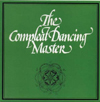 Ashley Hutchings and John Kirkpatrick caused a rumpus of sorts with Morris On, an audacious electric folk treatment of Morris dancing tunes. Next they created this treasure, a project spanning about seven centuries of dance music in England. They broadened the folk-rock palate by focusing more on traditional instruments such as crumhorn, spinet and viol, and linked musical pieces with historically relevant spoken word passages read by actors such as Sarah Badel, Michael Horden and Ian Ogilvy.
Ashley Hutchings and John Kirkpatrick caused a rumpus of sorts with Morris On, an audacious electric folk treatment of Morris dancing tunes. Next they created this treasure, a project spanning about seven centuries of dance music in England. They broadened the folk-rock palate by focusing more on traditional instruments such as crumhorn, spinet and viol, and linked musical pieces with historically relevant spoken word passages read by actors such as Sarah Badel, Michael Horden and Ian Ogilvy.
 
If memory serves, the popular musical landscape of 1972 England was a peculiarly charming mix of post-psychedelic pop, easy listening, progressive rock, white-boy blues, hippy remnants and fledgling-glam rock. Enter Ashley Hutchings to do the most unfashionable thing imaginable: an aggressive but charming folk-rock album of Morris Dancing tunes. That album, Morris On, had a rip-up-and-reassemble aesthetic vision of Englishness which (with hindsight) was as ludicrous and revolutionary as UK punk rock. At any rate, the natives were revolting; if only temporarily and not quite into style. Several tracks, such as "Staines Morris" (featuring Shirley Collins) have a hard edge and no-nonsense feel which lets them shine as music, away from the dance. Equally, "Cookoo's Nest" is a bawdy ode to the vagina, if not quite a monologue. Both pieces show the razor sharp crunch of Richard Thompson's guitar and the matching economy of Dave Mattacks's drums.
The Compleat Dancing Master was released the following year and is a more varied affair, with a wider musical scope and esteemed actors reading associated texts from such writers as Chaucer, Dickens, Hogarth and Shakespeare. Taking its title from books of dances collected and compiled by John Playford, the atmospheres on the album are sometimes akin to Peter Greenaway's The Draughtsman's Contract although not as up-itself or as nakedly pretentious. Hutchings, a cofounder of Fairport Convention, Steeleye Span and the Albion Band, was originally seduced by the Morris after hearing William Kimber the concertina player of the Headington Quarry Morris. For The Compleat Dancing Master he and Kirkpatrick reflect such inspiration by augmenting the hard folk-rock sound even further with the help of country dance playing experts such as Bert Cleaver, Dave Kettlewell, and Alan Ward. Indeed, some tracks feature no discernable rock influence at all. I like the way that the spoken pieces set up the music which follows. Michael Horden's reading (as Dickens from Sketches by Boz) leads into two polkas "Bonny Breastknot/Double Lead Through". Bernard Hepton's spittle-flinging rant against dance (as the Puritan William Prynne from Histriomastrix) precedes the 17th century tune "Nonesuch/Cuckold's All Awry". Gary Watson (as Geoffrey Chaucer reading from The Romaunt of the Rose) speaks in an old tongue as appealing as the Stanley Unwin brand of gobbledygook most often heard on Ogdens' Nut Gone Flake.
According to Lois Ellfeldt, Morris dance probably has a Moorish origin and is similar to some of the Basque dances; dancers take turns before returning to their position in either a square, circle, or longways set. Exact dates or origin are open to dispute and there are also conflicting reports (at least from the UK) as to the health or otherwise of the Morris. Some suggest that young people aren't taking up the practice and thus obsolescence beckons. Paul Reece, chairman of the Advisory Council of the Morris Ring, has said: "There is still time for new blood to get ready for the Spring fertility offensive". Certainly the pastime grew in the 1970s and if the participation of women is encouraged perhaps extinction can be avoided. For me, as long as the Abbot's Bromley Horn dance persists, all will be well, and I am confident it will be. In what other forms the Morris dance may survive is open to question. In a relatively new twist, groups distinct from the traditional Thomas Hardyesque figures have emerged, gathering in rural solitude to bring their own hue to the Morris. With blackened faces and clothing more akin to Goths at a Cure concert, these groups are accentuating the Pagan fertility aspects (not just holding sticks but making quasi-lewd motions with them) and reflecting a post-industrial urban sensibility. Rather disturbingly they are ditching the old tunes and writing their own minor key compositions. Reports suggest that these Pagans have day jobs in offices, in the probation service and pharmacies and that they heartily reject the Christian, Imperialist, xenophobic notions of England in favor of a more ancient, shamanistic version. It may be cynical to wonder if they aren't actually inspired by Terry Pratchett's Discworld. No word yet if their Christmas trees are black.
samples:
Read More

